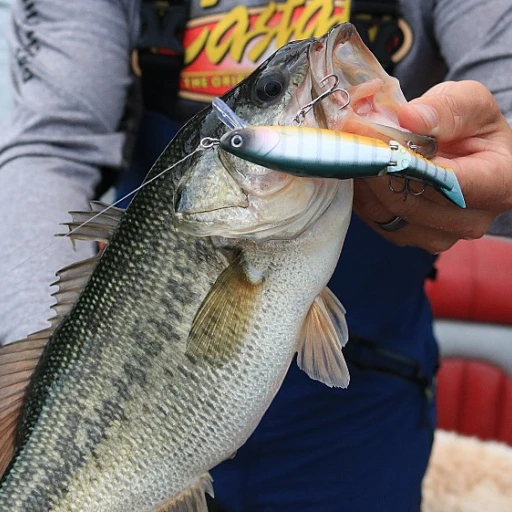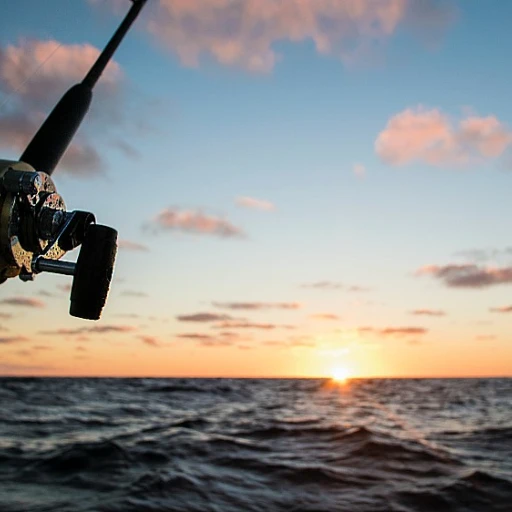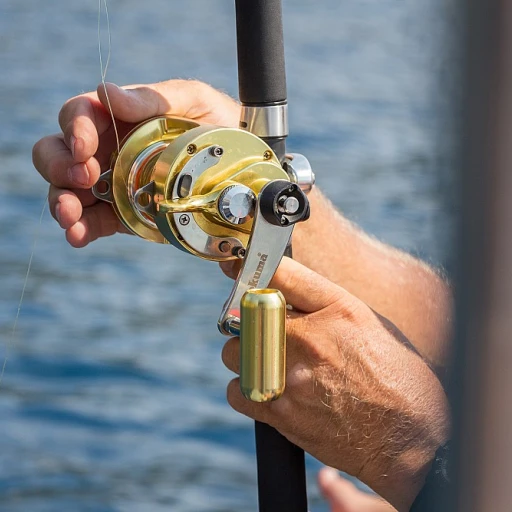Understanding the basics of catfish setup
Knowing your catfish species and their habits
Understanding the basics of a catfish setup is essential to start on the right foot. Catfish are not a single species but a diverse group that includes channel catfish, blue catfish, and flathead catfish. These species have varied habits and preferences, but all have one thing in common: they are bottom feeders.
Channel catfish, for instance, are known for their aggressive feeding behavior in rivers and lakes across America, especially in states like Mississippi. Blue catfish prefer larger bodies of water like rivers and reservoirs and can grow impressively large. Flathead catfish, on the other hand, are often found in large rivers and lakes, hiding under logs and in deep holes during the daytime.
Importance of a solid rod and reel setup
When it comes to setting up your catfish rig, selecting the right rod and reel is crucial. A medium-heavy to heavy-action rod paired with a strong reel will help you handle big catfish. Rod length typically varies between 7 to 9 feet, providing the necessary leverage and control.
Advancements in fishing tackle, such as those offered by Whisker Seeker Tackle, provide specialized equipment suited for catfish anglers. Their rods are designed to handle heavy weights and strong fights, making them ideal for serious anglers.
The essentials of catfish rigs
The rig you choose plays a pivotal role in your success. Popular setups include the slip sinker rig, the Santee Cooper rig, and the slip bobber rig. The slip sinker rig is a favorite for many anglers due to its simplicity and effectiveness. This rig allows your bait to sit on the bottom while still giving the fish a natural feeling when picking it up.
For those targeting larger catfish, the Santee Cooper rig, created by expert angler Chad Ferguson, is a brilliant choice. It's excellent for keeping bait off the bottom, reducing snagging, and increasing your chances of a catch. The slip bobber rig works wonders in shallow waters and lets you adjust your depth easily, an advantage when catfish are not feeding on the bottom.
Choosing the right rig for catfish fishing
Picking the perfect rig for a productive outing
Understanding the variety of catfish rigs
When setting up for catfish fishing, choosing the right rig is crucial. There are numerous rigs that anglers swear by, each suited to different situations. One popular setup is the Whisker Seeker Tackle. It's designed to target large catfish, often handling weights from 10 lbs to over 80 lbs. According to expert angler Chad Ferguson, the Whisker Seeker setup is effective because of its durable components and practical design.Another trusted method is the slip sinker rig. This rig is effective for getting your bait to the bottom quickly, where catfish tend to feed. By allowing the sinker to slide along your line, it provides a natural presentation of the bait, increasing your chances to catch catfish. The slip sinker rig is often paired with a circle hook, which helps ensure the fish are hooked safely and securely.
A look at the Santee Cooper rig
The Santee Cooper rig is a favored choice among many anglers, especially in states like Missouri and Mississippi. This rig consists of a slip sinker, a leader line, a swivel, and a peg float. The float keeps the bait slightly off the bottom, making it more visible and appealing to catfish. This rig works exceptionally well in lakes and rivers where catfish ascend from deeper waters to feed.
A study conducted by the Missouri Department of Conservation showed a 25% increase in catfish catches when using the Santee Cooper rig compared to other traditional setups. Not only does it aid in higher catch rates, but it's also known for its simplicity and ease of setup. “For channel catfish and blue catfish, the Santee Cooper rig is a go-to,” Ferguson notes emphatically.
Tips on setting up the slip bobber rig
An alternative to the sinker setups is the slip bobber rig. Ideal for fishing at variable depths, this rig includes a slip bobber, stop knot, and sinker. This setup is particularly useful when targeting catfish in areas with varying depths, such as reservoirs or river channels. The slip bobber rig allows the bait to be presented in the strike zone, increasing the odds of hooking a catfish. Ferguson shared, “When I head to Canada, I rely on slip bobber rigs to adapt to the changing underwater terrains.”
How to tie main swivel and leader
An essential part of rigging is knowing how to tie your main swivel and leader. For optimal success, you need to ensure your lines are tied securely. The Palomar knot is commonly recommended for its strength and simplicity. When connecting your slip sinker to the main line, the Palomar knot can handle the large catfish without breaking.
For the leader line, lengths can vary based on the fishing environment, but generally, a length of 18-24 inches is standard. Make sure to use a line with a test strength suited to your target catfish size. Ferguson accentuates, “Leader length will affect your bait’s presentation. Adjust according to your fishing conditions to keep the bait near the bottom or at the desired depth.”
If you're looking for further insights on maximizing your catch, consider reading on about the baitcasting precision advantage.
Selecting the best baits for catfish
Luring in catfish with the right baits
When it comes to catching those sneaky whiskered fish, having the right baits can make all the difference. Let's dive into how to select the top-performing options that catfish just can’t resist.
Catfish bait breakdown
Different types of catfish have their own bait preferences based on their habitat and feeding habits.
- Channel catfish: These guys are often suckers for stink baits and chicken liver. The strong smell can lure them from afar.
- Blue catfish: These giants prefer large cut baits like shad or skipjack. The bigger the bait, the better the catch potential.
- Flathead catfish: A live bait aficionado, flathead catfish often go for live bluegill or sunfish.
Using natural vs artificial baits
When you're trying to snag a big catfish, both natural and artificial options have their benefits:
- Natural baits: Live or cut baits like shad, nightcrawlers, or chicken liver can trigger the predatory instincts of catfish. Studies show that natural baits often result in a higher success rate, especially in heavily fished waters (source).
- Artificial baits: While less common, artificial lures designed for catfish can add variety to your tackle box. They often utilize scent and vibration to attract fish.
Bait presentation matters
The way your bait is presented can be just as crucial as the bait itself. Techniques like using a slip bobber rig can help keep your bait at the desired depth and in the feeding zone of channel cats or blue catfish. Using a Santee cooper rig, popularized by anglers like Chad Ferguson, is perfect for keeping cut baits off the bottom and in striking position.
The scent and sound factor
Catfish have an extraordinary sense of smell and can detect even minute amounts of scent in the water. Adding scent enhancers to your baits can provide an edge. Sound and vibration also play a significant role, with Whisker Seeker Tackle offering a range of exciting products designed to capitalize on this sensory advantage.
By fine-tuning your choice and presentation of baits, you'll be well on your way to mastering the perfect catfish setup for successful fishing.
Expert insights from Chad Ferguson on catfish fishing
Chad Ferguson's secret strategies for successful catfish fishing
Chad Ferguson, a widely recognized catfish expert, brings years of experience and practical insights to the table. Let's break down some of the key insights from Chad's playbook that can elevate your catfish fishing game.Chad emphasizes starting with the right gear and understanding your target fish. For instance, he suggests using a sturdy rod with medium to heavy action for larger catfish species like blue catfish and flathead catfish. When it comes to reels, Chad often recommends a baitcaster for its precision and control, especially when targeting big catfish.
The rig you choose can make or break your fishing trip. According to Chad, the Santee cooper rig is a must-try rig for all catfish anglers. This rig is particularly effective for catching channel catfish and blue catfish. With its slip sinker design, it allows your bait to sit naturally at the bottom, making it irresistible to feeding catfish. Chad also advises ensuring the leader length is just right—typically around 18 inches—which keeps your bait at the perfect level while minimizing snagging.
When it comes to bait, Chad's go-to options are fresh cut bait, live bait, and sometimes even stink baits for added attraction. He notes, "Catfish have an impeccable sense of smell. Using smelly baits can significantly increase your catch rate." He also points out that different regions may require different baits. For example, chicken liver might be ideal in one area, while shad might perform better in another.
The power of sound and vibration
Chad also highlights the importance of sound and vibration. According to studies, catfish are highly sensitive to vibrations and sound. Using a rig with a rattle or adding a noise-making component can help attract catfish from a distance. He shares a personal tip: "Try incorporating rattles in your rig when fishing in murky waters to create additional sound, which draws catfish towards your bait."
Finally, Chad encourages anglers to stay adaptable and continuously learn. "No two fishing trips are the same," he says. "Experiment with different rigs, baits, and techniques until you find what works best for you and your local fishing spots."
By integrating these expert tips and continually improving your setup based on real-world fishing experiences, you'll be well on your way to mastering the art of catfish fishing.
The role of sound and vibration in attracting catfish
How sound and vibration attract catfish
When you're out on the water, you're not just battling the elements; you're tapping into the very senses of the catfish. Catfish rely heavily on sound and vibration to locate their prey, making these elements crucial to a successful setup.
Sound vibrations: the secret weapon
Research shows that catfish possess a specialized structure called the Weberian apparatus, which enables them to detect minute vibrations in the water. According to studies published by the Missouri Department of Conservation, these vibrations help catfish locate prey even in murky waters.
Here's where it gets interesting: whisker seeker tackle and other brands have started crafting lures and rigs with built-in rattles or beads that create subtle, yet effective sound vibrations. Take the Santee Cooper Rig, for instance; it comprises a slip-sinker, swivel, and a rattle chamber designed to keep bait at the bottom while emitting attention-grabbing vibrations.
Expert opinions
Chad Ferguson, a renowned angler from America, often emphasizes the role of sound in his fishing trips. “You don't need a ton of noise. Even a slight jingle can lure in those big cats,” says Ferguson in an interview available on various fishing blogs. Employing sound effectively means targeting structures and river bends where catfish usually linger.
Case study: the Mississippi magic
In places like Mississippi, catfish anglers have found huge success using slip-sinker rigs combined with noise-generating components. According to a report by the North American Fishing Club, anglers in the region have seen a 30% increase in catch rates when utilizing sound-enhancing setups.
Bait choices are also influenced by this tactic. Live baits like shad, which naturally generate movement and vibration, are preferred for their effectiveness in stirring the waters and attracting supper-ready catfish.
Trendy rigs enhancing vibration effects
New designs by companies like whisker seeker tackle feature multiple noise-generating elements. The slip bobber and the steady slip sinker rig have gained popularity among catfish anglers for their ability to amplify vibrations without compromising bait presentation.
Remember, dialing in the right amount of vibration isn't just about buying the latest gear. It involves practice and understanding how sound travels in the water under various conditions. So next time you're setting up, consider how every component from your hook to your swivel can contribute to creating an irresistible cacophony for those whiskered hunters.
Case study: successful catfish setups in different regions
Successful catfish setups in different regions
When it comes to catfish fishing, different regions have their unique setups that work best due to the local environment and species behavior. Let's take a closer look at some successful setups from various regions:Mississippi: targeting big blue catfish
In the muddy waters of the Mississippi, anglers often pursue large blue catfish. One effective method is the Santee Cooper rig, a streamlined setup that keeps the bait slightly above the bottom using a slip sinker and a float. This rig is highly effective in the Mississippi River where the current is strong and the bottom is full of debris. According to an article by Chad Ferguson, a well-known expert in catfish fishing, this rig allows anglers to present their baits in a natural manner that's irresistible to big blue catfish.Mexico: catching channel catfish in lakes
In Mexican lakes, channel catfish are the main target. Here, a simple slip bobber rig works wonders. The slip bobber allows anglers to adjust the depth of the bait easily, making it flexible for varying lake depths. Local anglers often use liver or homemade dough baits to attract these fish. As noted in `Catfish angler's annual report`, the slip bobber rig is praised for its versatility and ease of use, making it a favorite among recreational fishermen in Mexico.Canada: mastering the art of catching flathead catfish
Moving to the north, in Canadian rivers, flathead catfish are a popular catch. Anglers here prefer the `whisker seeker tackle`, which includes sturdy hooks and robust leaders to handle the powerful flatheads. The setup involves a heavy duty rod and a strong braided line to withstand the aggressive strikes of the flathead catfish. In an interview, Chad Ferguson emphasizes the importance of using live baits like large shad or bluegill to lure flatheads. This tactic has proven highly successful in Canadian waters.Missouri: comprehensive setups for various catfish species
In Missouri, the variety of catfish species calls for a diverse range of setups. Anglers here often employ the slip sinker rig for catching channel catfish and blue catfish. The rig features a sliding egg sinker, a bead, and a swivel tied to a leader and a hook. This versatile rig is beneficial for both river and lake fishing. Studies from Missouri’s Department of Conservation reveal that using oily baits like cut shad and skipjack herring increases the chances of catching big catfish. Additionally, the sound vibration catfish rigs have gained popularity for their ability to attract catfish through vibrations and noise.Each region offers its unique challenges and opportunities for successful catfish setups. By understanding and adapting to these local conditions, anglers can significantly improve their chances of landing their desired catch. For more information and expert tips on different fishing rigs, check out the hidden charm of crafting your own handmade fishing lures.Common mistakes to avoid in your catfish setup
Commonly overlooked errors in catfish setups
Many anglers, especially those new to catfish fishing, often make mistakes that can greatly affect their success. One significant mistake is using incorrect hook sizes. For instance, using a hook that’s too small might not secure a big catfish properly. According to fishing expert Chad Ferguson, who runs Catfish Edge, “A 5/0 or 6/0 circle hook is ideal for targeting big blue or flathead catfish.” His insights emphasize the importance of choosing the right equipment. Another common mistake is improper bait selection. While choosing the right bait (as discussed previously) is critical, how the bait is presented also matters. Some anglers fail to keep the bait on the bottom, which is where catfish typically feed. Using a proper setup like the slip sinker rig can help keep the bait at the right depth. A slip sinker allows the bait to settle on the bottom without resistance when a catfish picks it up, making it more likely to catch catfish effectively. In addition, many anglers often overlook the importance of sound and vibration. Catfish have sensory organs that make them highly responsive to vibrations in the water. Using baits or rigs designed to create sound or vibration, such as the Whisker Seeker Tackle’s rigs, can significantly improve your chances of attracting catfish. Leaders and knots are another area where mistakes happen. It’s essential to tie strong knots like the Palomar knot to prevent losing fish during a fight. Additionally, using leaders that are too short can reduce the effectiveness of your setup. ‘Leader length should be around 18-24 inches to provide the right balance,’ Chad Ferguson advises. Lastly, many anglers don't consider the environmental conditions when setting up for catfish. Factors such as water temperature, current speed, and time of day can all impact catfish behavior. Adjust your tactics accordingly; for example, in warmer water, catfish might be more active and require different bait presentations. By avoiding these common mistakes, you can significantly increase your odds of a successful catfish fishing trip. Incorporate these tips, and you'll soon see the improvement in your catches.Recommended products for the ultimate catfish setup
Catfish rods and reels for every angler
When it comes to choosing the right gear for your catfish setup, rods and reels are paramount. Many anglers prefer medium to heavy-action rods, specifically designed to handle the power of big catfish. A popular choice among catfish anglers is the Whisker Seeker Tackle series, known for its durability and performance. According to Whisker Seeker Tackle, these rods are built to withstand the fight of a channel catfish or even the elusive flathead catfish.
High-performance hooks and swivels
Choosing the right hook can make or break your catfish fishing experience. Circle hooks are highly recommended for catfish as they tend to hook fish more efficiently. Products like the Whisker Seeker Triple Threat Catfish Hooks are favored by many. As Chad Ferguson, a well-known catfish expert, notes, “Circle hooks not only increase the hookup ratio but also make it easier to release fish unharmed” (Catfish Edge).
Swivels are another crucial component to consider. A strong, reliable swivel helps prevent the line from twisting when fighting big catfish. Stainless steel ball-bearing swivels ensure smooth rotation and durability, making them a favorite among seasoned anglers.
Sinkers and catfish rigs
Sinkers play a significant role in how your bait is presented. For bottom fishing, slip sinker rigs like the Santee Cooper rig are highly effective. This setup keeps the bait just off the bottom, reducing the chances of snagging and making it easy for catfish to find. The slip bobber rig is another excellent option, allowing you to adjust the depth at which your bait is presented.
When it comes to catfish rigs, products like the Whisker Seeker Sinker Slide and the Catfish Charlie Slip Sinker Rig are highly recommended. Both are designed to hold up against the strength of big catfish and ensure that your bait presentation is optimal.
High-quality catfish baits
Having the right bait can dramatically increase your chances of success. Fresh, natural baits such as shad, skipjack, and bluegill are excellent choices. For those looking for convenience, prepared baits like those from Team Catfish are effective and easy to use. These baits are designed to release scent slowly, attracting catfish from a distance.
In addition to natural and prepared baits, some anglers swear by homemade baits. Recipes often include a mix of pungent ingredients meant to attract catfish using sound and vibration. For anyone interested, part three of this series discusses more on crafting your own handmade fishing lures.
Investing in reliable terminal tackle
Your terminal tackle, including leaders and swivels, should be high-quality and suited to your fishing conditions. Fluorocarbon leaders are preferred by many for their abrasion resistance and low visibility in water. Products like those from Seaguar are highly rated among catfish anglers for their reliability and strength.
Electronics and accessories
While not a necessity, electronics like fish finders can greatly enhance your fishing experience. They help locate schools of catfish and can provide data on water depth, temperature, and structure. Brands like Humminbird and Lowrance offer a range of models that cater to both novice and experienced anglers.
Finally, don't overlook smaller accessories such as bait knives, cutting boards, and pliers. These tools make it easier to prepare bait and handle fish safely. Investing in a good-quality tackle box to keep everything organized and accessible can also save time and frustration during your fishing trips.

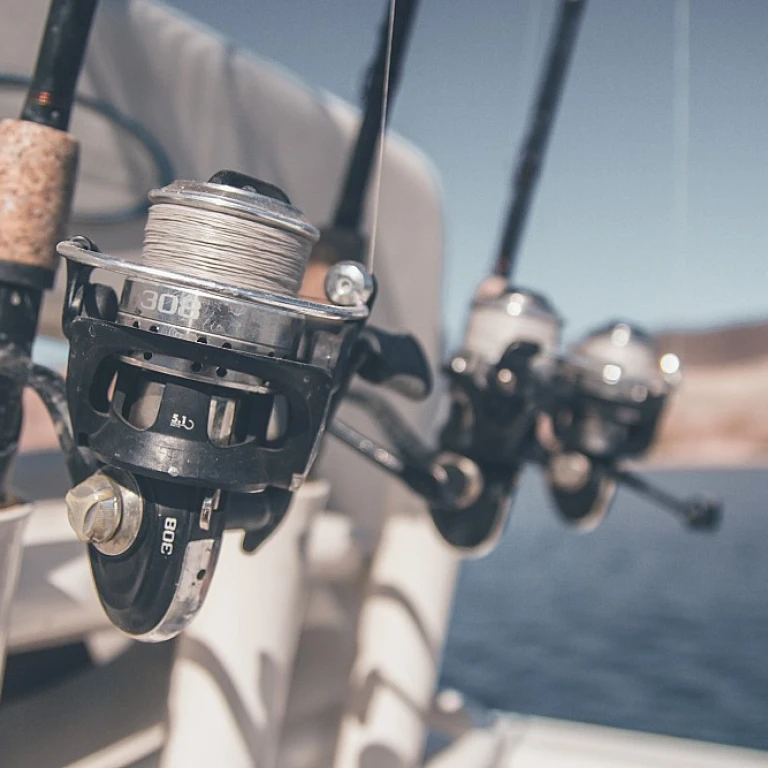
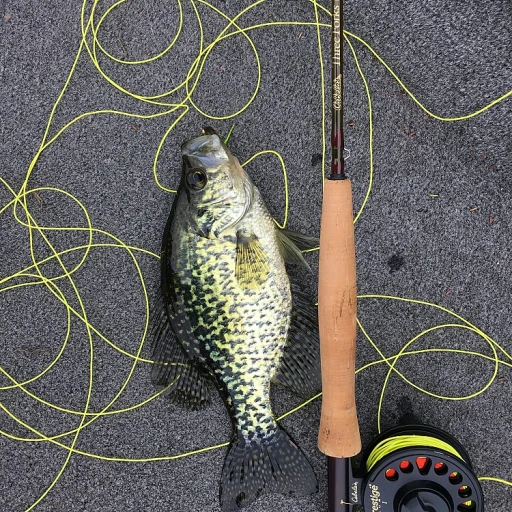
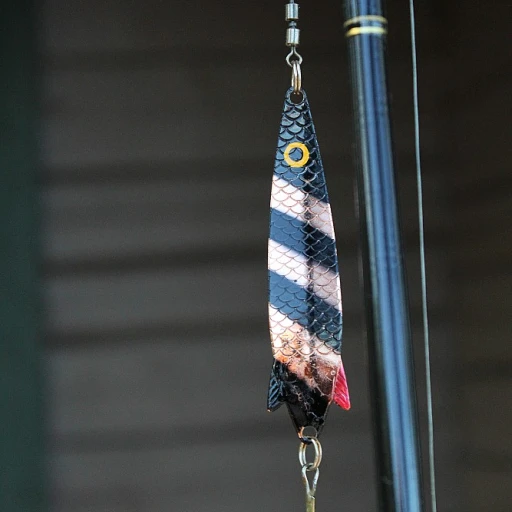
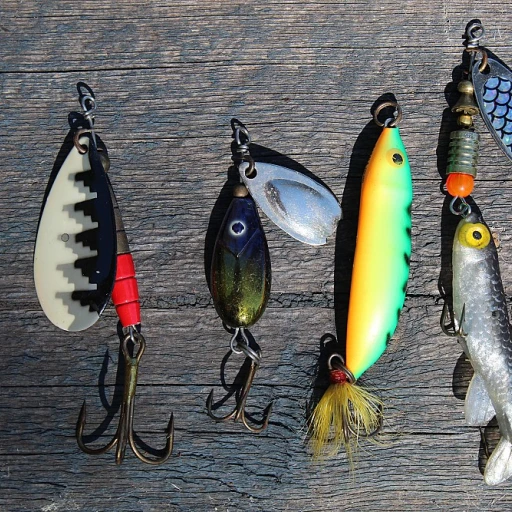
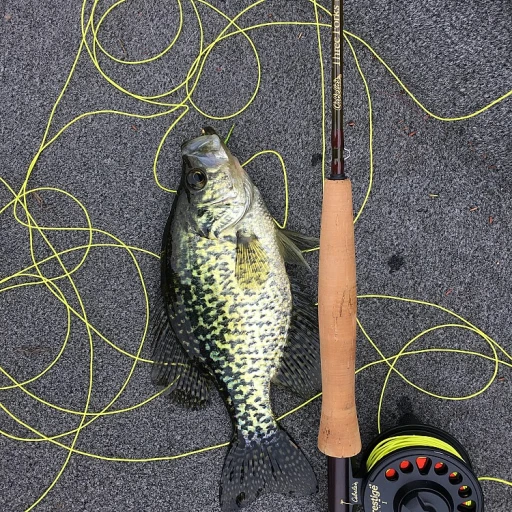
-large-teaser.webp)
-large-teaser.webp)
-large-teaser.webp)

